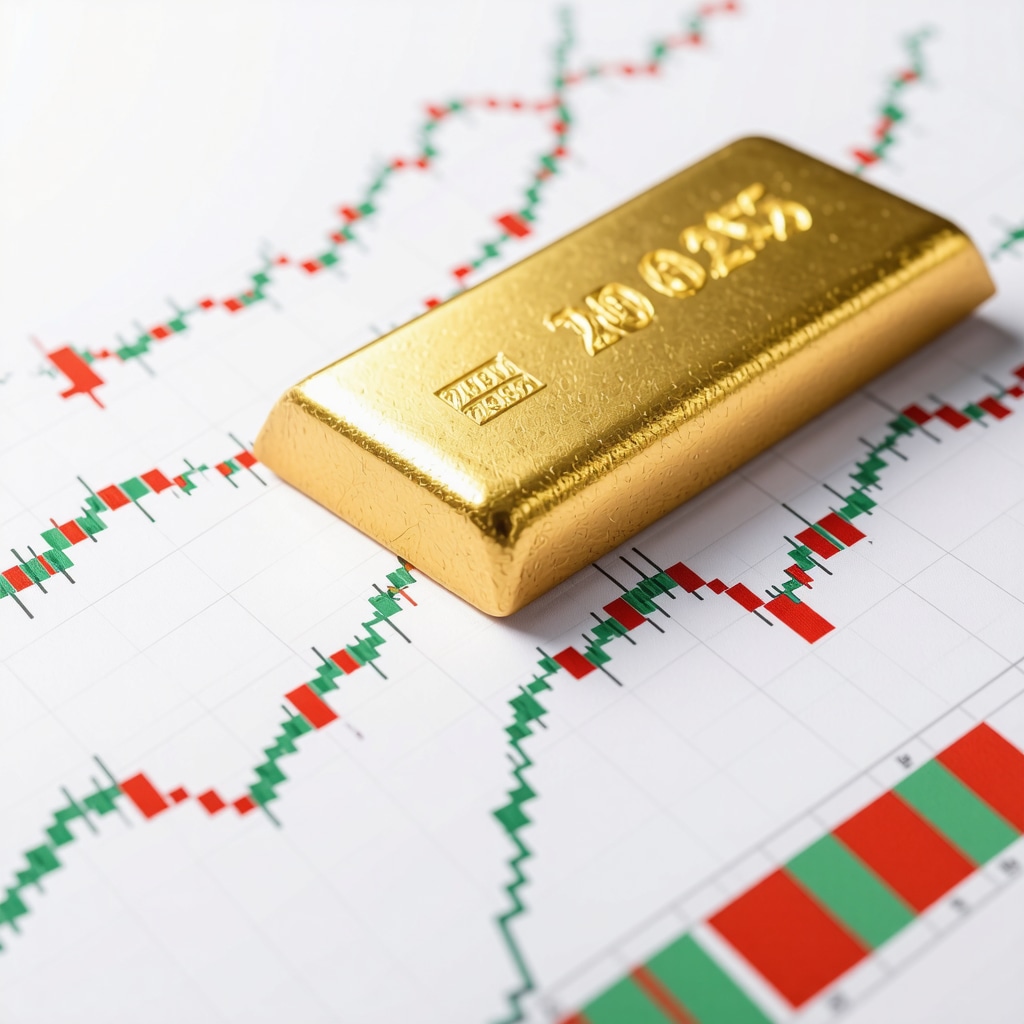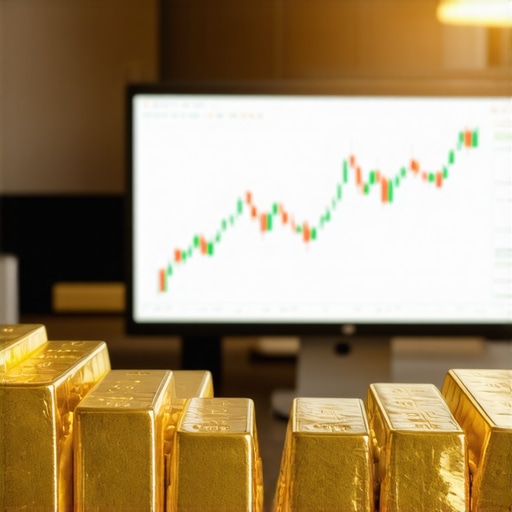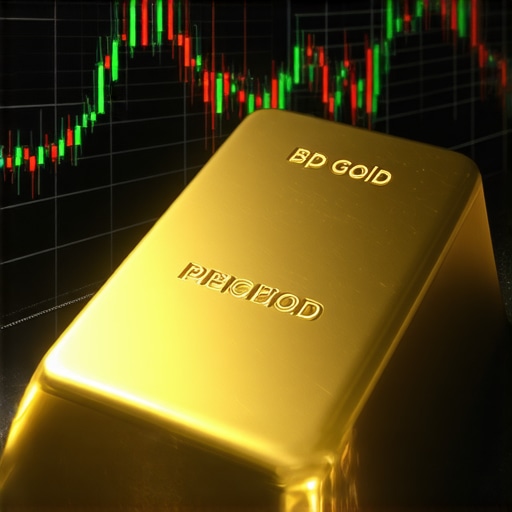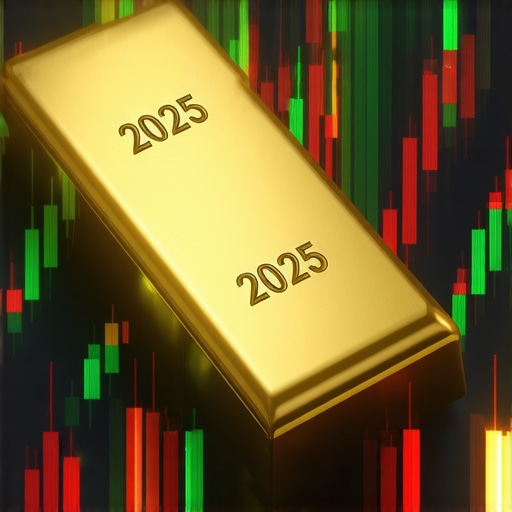Unveiling the Complexities Behind Gold Price Movements in 2025
As we navigate the evolving landscape of global finance in 2025, understanding the fundamental drivers of gold prices becomes imperative for investors, policymakers, and industry analysts alike. Gold, historically revered as a safe-haven asset, now operates within a multifaceted matrix of economic indicators, geopolitical tensions, and market sentiment. This article offers a comprehensive, expert-level exploration of the key factors influencing gold’s trajectory this year, leveraging insights from recent academic publications and industry reports.
The Role of Central Bank Policies and Gold Reserves
Central banks continue to play a pivotal role in shaping the gold market. Their purchasing patterns, as detailed in recent market analysis reports, reveal a strategic accumulation of reserves amid inflation concerns and currency devaluations. Notably, the shift towards diversification of reserves has prompted some nations to augment their gold holdings, thereby exerting upward pressure on prices. The dynamics of these central bank moves, including the impact of quantitative easing and monetary tightening, are critical to understanding short-term volatility and long-term stability in gold markets.
Economic Indicators and Inflationary Pressures
Inflation remains a dominant driver of gold demand, especially as real interest rates fluctuate unpredictably. The inverse relationship between interest rates and gold prices is well-documented, with declining yields often correlating with price surges. Experts highlight that in 2025, persistent inflationary pressures, driven by supply chain disruptions and fiscal stimulus measures, have sustained investor interest in gold as a hedge. This is further supported by analyses from market forecasts, emphasizing that macroeconomic uncertainties fuel safe-haven demand.
Market Sentiment and Geopolitical Tensions
Market sentiment, influenced by geopolitical tensions such as conflicts, trade disputes, and diplomatic crises, significantly impacts gold prices. In 2025, ongoing tensions in key regions have heightened risk aversion, prompting increased allocations to physical gold and gold-backed financial products like ETFs. The role of investor psychology, as explored in behavioral finance studies, underscores a collective move towards assets perceived as stable during turbulent times. Consequently, sudden geopolitical events can trigger rapid price adjustments, demonstrating the fragile equilibrium within the gold market.
Supply and Demand Dynamics: Mining Output and Industry Consumption
Supply-side factors, including mine production levels and technological advancements in extraction, directly influence the available gold stock. Industry demand, particularly from jewelry, electronics, and industry-specific applications, also shapes price trends. Recent industry reports suggest that in 2025, mine output has faced constraints due to regulatory challenges and environmental considerations, tightening supply. Simultaneously, increased demand from emerging markets and technological sectors has maintained upward pressure on prices, emphasizing the importance of supply-demand balance.
What Are the Emerging Risks That Could Disrupt Gold’s Price Stability in 2025?
Investors and analysts are keenly observing potential risks such as sudden shifts in monetary policy, technological disruptions in mining, or breakthroughs in alternative assets that could divert demand away from gold. Understanding these risks is crucial for strategic positioning and hedging against unexpected market swings. For a detailed look into effective strategies, explore our trading techniques guide.
For those interested in diversifying their portfolio with gold, reviewing expert insights on building a gold ETF portfolio can provide practical strategies tailored for 2025’s market conditions. As the landscape continues to evolve, staying informed through trusted sources like the World Gold Council further enhances decision-making confidence.
In this dynamic environment, understanding the intricate web of economic, geopolitical, and market factors is essential for making informed investment choices. Gold’s unique position as both a store of value and a reflection of macroeconomic health underscores its ongoing relevance in 2025’s financial landscape.
Unlocking the Hidden Forces Shaping Gold’s Future in 2025
As gold continues to serve as a barometer of global economic health, understanding the nuanced factors influencing its price becomes essential for investors aiming to optimize their portfolios. Beyond conventional supply and demand, emerging technological innovations and shifting geopolitical alliances are subtly reshaping the landscape. This article delves into these advanced dimensions, offering expert analysis and practical insights to navigate the complexities of gold investing in 2025.
Technological Disruptions: The New Frontier in Gold Markets
The rapid pace of technological change presents both challenges and opportunities for gold investors. Innovations in digital asset management, such as blockchain-based gold tokens, are gaining traction, potentially altering traditional demand patterns. These digital assets offer increased liquidity and security, appealing to a new generation of investors who seek seamless integration with their digital wallets. Understanding how these technological advancements impact gold’s liquidity and perception as a safe haven is crucial. For a comprehensive view, explore our trading techniques guide.
Geopolitical Shifts and Their Impact on Gold’s Role as a Safe-Haven
In 2025, geopolitical realignments—such as evolving alliances and regional conflicts—continue to influence investor sentiment. Analyzing these shifts through the lens of geopolitical risk indices reveals that uncertainty remains high, reinforcing gold’s status as a protective asset. Yet, some regions are diversifying their reserves by adopting alternative assets, which could temper demand. Experts suggest that monitoring these geopolitical developments using real-time analysis tools can provide a strategic advantage. Stay ahead with insights from trusted sources like the World Gold Council’s reports.
Supply Chain Innovations and Regulatory Challenges
Technological advances in mining, such as automation and AI-driven exploration, are transforming supply-side dynamics. These innovations aim to reduce costs and environmental impact, but regulatory hurdles in environmentally sensitive regions may limit output growth. Concurrently, increased industry demand for ethically sourced gold is prompting stricter compliance standards, influencing supply stability. For detailed insights into how these factors shape supply, see our supply-demand analysis.
How Can Investors Leverage Advanced Market Tools to Forecast Gold’s Trajectory in 2025?
Employing sophisticated tools like machine learning models and sentiment analysis platforms can enhance prediction accuracy. These technologies analyze vast, real-time data streams—covering geopolitical news, economic indicators, and market sentiment—to generate actionable forecasts. Integrating these insights with traditional technical analysis, such as those detailed in our market timing strategies, can provide a significant edge. As noted by financial experts, leveraging technology-driven analytics is increasingly vital for proactive decision-making in volatile markets.
For those seeking a diversified approach, exploring options like building a gold ETF portfolio tailored to 2025’s trends can mitigate risks while capturing growth opportunities. Staying informed through authoritative sources such as industry reports and economic forecasts remains paramount in this dynamic environment.
In conclusion, understanding the multi-layered factors—spanning technological innovations, geopolitical shifts, and regulatory developments—empowers investors to make strategic moves. As the landscape continues to evolve, continuous learning and adaptation are key to capitalizing on gold’s enduring value in 2025.
Emerging Technological Frontiers: Blockchain Innovations and Gold Liquidity
As the digital transformation accelerates, blockchain-based gold tokens are revolutionizing liquidity and accessibility. These digital assets, often backed by physical gold, enable instant transactions and fractional ownership, broadening the investor base beyond traditional markets. According to a report by the World Gold Council, the adoption of blockchain technology could significantly reduce transaction costs and improve transparency, thereby influencing gold’s perceived safety and liquidity. Investors should evaluate the regulatory landscape surrounding digital gold assets, as evolving legal frameworks could either catalyze or hinder their growth.
The Nuanced Impact of Geopolitical Re-alignments on Gold’s Safe-Haven Status
In 2025, geopolitical shifts are not only about conflicts but also about strategic realignments that affect currency stability and international reserves. For instance, emerging alliances may lead to regional blocs that diversify away from US dollar dependency, impacting global reserve strategies. These shifts, analyzed through indices like the Geopolitical Risk Index, underscore the importance of continuous geopolitical monitoring. As some nations pivot to alternative assets such as cryptocurrencies or regional currencies, the traditional role of gold as the ultimate safe-haven could experience subtle shifts, demanding a nuanced approach from investors.
Supply Chain Resilience: The Future of Gold Mining and Ethical Sourcing
Technological innovations in exploration, including AI-driven geospatial analysis and robotic mining, are promising to enhance supply chain resilience. Yet, environmental and ethical considerations impose new compliance standards, often increasing costs and limiting output. The USGS Mineral Resources Program reports ongoing efforts to improve traceability and sustainability. These developments could create supply bottlenecks, further elevating prices. Investors should consider the implications of these supply-side dynamics and explore opportunities in companies pioneering sustainable extraction technologies.
What Advanced Analytical Techniques Can Enhance Gold Price Forecasting in 2025?
Utilizing machine learning algorithms and sentiment analysis platforms enables real-time, data-driven forecasts. These tools synthesize vast datasets—covering geopolitical news, macroeconomic indicators, and social media sentiment—to identify subtle market signals. For example, neural networks trained on historical price movements can predict short-term volatility with increased accuracy. As noted by Fintech Magazine, integrating AI-driven analytics with traditional technical analysis enhances strategic decision-making. Investors should consider adopting these technologies to stay ahead in the rapidly evolving gold market landscape.
Engaging with comprehensive resource guides, such as our market timing strategies, can empower investors to leverage these advanced tools effectively. As the complexities of the global economy deepen, a sophisticated, multi-layered analytical approach becomes indispensable for informed investment choices.
Unraveling the Influence of Digital Asset Integration on Gold Liquidity and Market Stability
As technological innovation continues to reshape the financial landscape, blockchain-based gold tokens are emerging as transformative instruments. These digital assets, often backed by physical gold, facilitate instant transactions, fractional ownership, and enhanced transparency, thereby broadening access to gold investments. According to a detailed report by the World Gold Council, the adoption of blockchain technology holds the potential to significantly reduce transaction costs and mitigate counterparty risks, fundamentally altering perceptions of gold’s safety and liquidity. Investors should scrutinize evolving regulatory frameworks governing digital gold to assess their impact on market growth and stability.
Geopolitical Reconfigurations and the Shifting Paradigm of Safe-Haven Assets
In 2025, geopolitical realignments extend beyond conflict zones, influencing currency stability and international reserve diversification. Emerging alliances and regional blocs are progressively reducing reliance on traditional reserve currencies like the US dollar, which subtly influences gold’s role as a global safe-haven. Analyzing indices such as the Geopolitical Risk Index reveals persistent uncertainty, prompting strategic asset reallocation. Investors should monitor these shifts through real-time geopolitical analytics, enabling proactive adaptation to potential market disruptions.
Innovations in Mining Technology and the Future of Ethical Supply Chains
The integration of AI-driven geospatial analysis and robotic mining techniques promises to enhance supply chain resilience while addressing environmental concerns. However, escalating regulatory standards and ethical sourcing requirements—documented comprehensively by the USGS Mineral Resources Program—may constrain supply growth. These developments could lead to supply bottlenecks, elevating prices and incentivizing investments in sustainable mining technologies. Strategic investors should evaluate the potential of companies pioneering eco-friendly extraction methods to capitalize on emerging supply constraints.

Leveraging Advanced Analytical Technologies for Precise Gold Market Forecasting
Employing machine learning algorithms and sentiment analysis platforms enables the synthesis of vast, real-time data streams—encompassing geopolitical news, macroeconomic indicators, and social media sentiment—to generate highly accurate forecasts. Neural networks trained on historical price patterns can identify subtle signals of volatility, providing a strategic edge. As highlighted by Fintech Magazine, integrating AI with traditional technical analysis enhances predictive capabilities. Investors should adopt these sophisticated tools to navigate the complexities of the 2025 gold market effectively.
For comprehensive guidance, explore our market timing strategies, which detail how to incorporate technology-driven analytics into investment decisions. Staying informed through authoritative industry reports and economic forecasts remains essential for maintaining a competitive advantage in this volatile environment.
Expert Insights & Advanced Considerations
1. Technological Innovation as a Market Catalyst
Emerging blockchain-based gold tokens are transforming liquidity and fractional ownership, broadening access and reducing transaction costs. Experts emphasize that understanding these innovations can provide strategic advantages in portfolio diversification and risk management.
2. Geopolitical Realignments and Reserve Diversification
Shifts in regional alliances and currency stability influence gold’s safe-haven status. Monitoring indices like the Geopolitical Risk Index is crucial for anticipating market movements and adjusting investment strategies accordingly.
3. Supply Chain Resilience and Ethical Sourcing
Advancements in AI-driven exploration and robotic mining aim to secure supply chains. However, regulatory and ethical standards are tightening, impacting supply availability and pricing. Staying informed on these developments is vital for long-term investment planning.
4. Leveraging Advanced Analytical Technologies
Machine learning models and sentiment analysis tools enable precise forecasting by synthesizing real-time geopolitical, economic, and social data. Integrating these tools with traditional technical analysis enhances decision-making accuracy in the volatile 2025 gold market.
5. Digital Assets and Market Stability
Blockchain-backed gold tokens are gaining traction, offering increased liquidity and transparency. Investors should evaluate evolving regulatory frameworks to understand their impact on market stability and growth opportunities.
Curated Expert Resources
- World Gold Council: Renowned for authoritative research on gold market innovations, supply-demand dynamics, and technological advancements.
- USGS Mineral Resources Program: Provides comprehensive data on mining technology, environmental standards, and supply chain sustainability.
- Fintech Magazine: Offers insights into AI, machine learning, and digital asset integration in financial markets, including precious metals.
- Academic Journals on Geopolitical Risk: Essential for analyzing real-time geopolitical shifts affecting reserve strategies and currency stability.
- Industry Reports on Ethical Mining: Critical for understanding regulatory impacts and investment opportunities in sustainable mining technologies.
Final Expert Perspective
In the complex landscape of 2025, mastering the interplay of technological innovation, geopolitical shifts, and supply chain resilience is key to strategic gold investing. The integration of advanced analytical tools and awareness of evolving digital assets can significantly enhance market foresight. As industry experts, we encourage continuous learning and active engagement with authoritative sources to stay ahead in this dynamic environment. For those committed to deepening their expertise, exploring resources like central bank purchasing patterns and supply-demand analyses will prove invaluable. Embrace these insights to navigate the future with confidence and strategic clarity.”},










